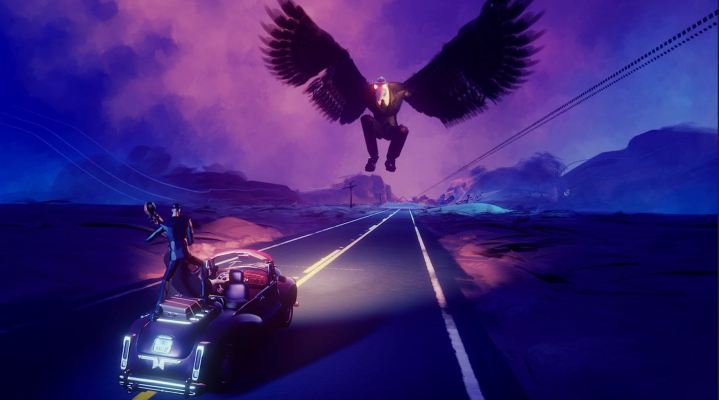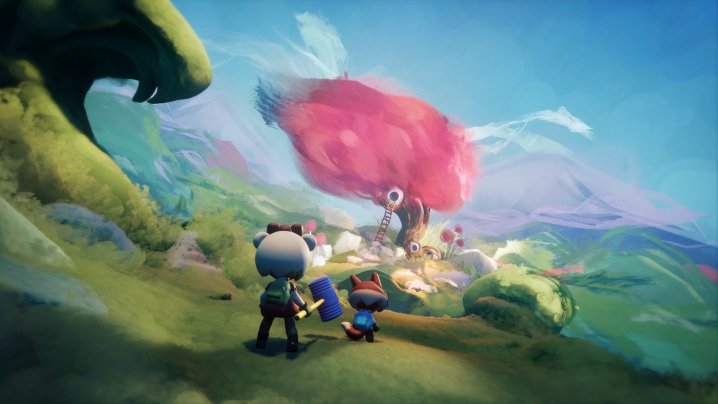Sony could’ve had its own popular proprietary game engine and metaverse. Instead, it just let it slip through its fingers.
Media Molecule is ending live support for Dreams, its highly ambitious game-creating and playing tool for PS4, on September 1. Its servers are staying online for now — and it has a few more content updates in the pipeline before then — but after August, there will be no new tools, ports, or events for Dreams. That means it’s not coming to PS5, PlayStation VR2, and, most critically, PC.
I didn’t play Dreams a lot, only briefly engaging with the free trial around the time it became available. Still, I was quite impressed with some of the more ambitious games I came across and the more comedic creations. I saw great potential in Dreams ahead of its release as a powerful tool Sony could use as a fun gaming hub and a potential game engine that could power future indie games. Sadly, none of that will come to be. Sony’s failure to focus on the areas where Dreams could be more successful ultimately doomed it to this fate, potentially robbing PlayStation of an excellent live service experience that it seems to want now more than ever.
An almost-metaverse
Despite Media Molecule making a very ambitious product over the course of a decade, a lack of compelling promotion pre-and-post launch hurt Dreams from the start. It was first teased at the PS4’s reveal event but didn’t feel like it launched too much fanfare when it finally came out seven years later in 2020. I imagine a lot of players checked out Media Molecule’s creations, played a few user-made ones and then never gave the game a second thought.

That’s a shame, as some of the ideas at the core of Dreams became quite trendy in the years after its release. While AI is getting more attention now, the “metaverse” was gaming’s big golden goose for a few years. That’s the idea of a big social space that players can not only hang out in but create content for. At its core, that means it needs good tools to make user-generated content, which is something Dreams excelled at
The term metaverse can be a pretty buzzword and is often associated with more nefarious business practices, but I can’t deny that a user-generated content backbone is part of what makes titles like Fortnite successful. Dreams provided an expansive suite of tools that might have even been a bit better than some of its metaverse competitors boasting about their technology. Even Media Molecule referred to its broader ecosystem as the Dreamiverse, so there was at least some self-awareness from the developers there.
Despite that, Sony never publicly positioned Dreams as its big metaverse live service or demanded that it get PlayStation Home-like social spaces that could’ve elevated it in that space. Unless you were a hardcore fan who already bought into Dreams, there weren’t many reasons to make things with it rather than in something like Fortnite Creative — not that most people in that position would even know about Dreams due to its lack of visibility.

A lack of attention
In general, Dreams failed because it was not popular enough, as Sony failed to attract people who weren’t already into the idea. Dreams has a small but passionate community that demanded new features and engaged with events like DreamsCom and The Impy Awards, but those things failed to make much of a splash or get promotion outside of spaces mainly focused on people already engaged with Dreams. Sony failed to promote this game well post-launch, which is critical for something that relies heavily on a large, engaged community.
If Dreams felt very separate and neglected by Sony to me, a journalist immersed in lots of gaming news, I could only imagine how hard it was for this game to get the attention of new casual players over three years out from launch. The best thing to do with the game, then, is to target the hardcore developers who could use it to make and sell content. Dreams could have been more successful on that front too.
Even at release in 2020, it felt like Dreams wouldn’t come into its own until it came to PC with mouse and keyboard support. It’s a platform much more preferable for making games than a PS4 and PSVR with DualShock 4 and PlayStation Move controls. Sony’s fledgling PC support lagged far behind Dreams, and it sadly didn’t seem to be as much of a priority as getting critically acclaimed gems like God of War and The Last of Us Part I on PC.

There was never a good way to break out and monetize game creations from Dreams on PS4 or other platforms. When your game engine doesn’t work well as a game engine outside of its own small walled garden, it’s very unlikely to catch on, no matter how impressive it is.
Despite Media Molecule’s best efforts, it feels like Dreams never got the support it needed from Sony to truly thrive. As a result, its passionate community will be left in the dust as Media Molecule moves on to making new things, and Sony invests lots of money in creating new live services instead of capitalizing on one it already had. Dreams feels like one of Sony’s biggest gaming fumbles of the past decade, not because it’s a bad game but because it was never able to achieve its full vision.



